Day three of our research trip began with a private tour of Hever Castle in Kent, Anne Boleyn’s childhood home. I had been looking forward to this day since the moment we booked and could hardly believe that we’d have the castle and a guide all to ourselves.
I think it’s a little unusual for individuals to book private tours because when we arrived we were met by a lovely lady in the parking lot that enquired as to the whereabouts of the two tour busses… Instead of expecting two people, they were expecting two busloads!
After lots of giggles and clarification that we were indeed only two very enthusiastic individuals touring the castle, we met with our guide.
It had been years since I’d last visited Hever, and seeing it again was like seeing a beloved old friend. I could hardly contain my excitement as we crossed over the drawbridge and under the portcullis into the inner courtyard. Our guide shared stories of the history of the building and we breathed in its every detail.
The original defensive castle, built by William de Hever in 1270, consisted of the gatehouse and walled bailey. In 1462, Anne Boleyn’s great-grandfather, Geoffrey Boleyn, purchased the castle, extended it and converted it into a private home. When the Boleyn family moved into Hever in c. 1505 they added a comfortable Tudor dwelling within the walls.
Anne Boleyn, together with her siblings Mary and George, is likely to have spent a good deal of her childhood here prior to being sent to join the court of the Archduchess Margaret in 1513.
I found it incredible that in the very rooms that I now wandered, Anne Boleyn once played with her siblings. What must Anne, the child, have been like?
Remarkable I imagine; undoubtedly fiercely intelligent and witty; perhaps competitive and a little stubborn too.
After Anne’s fall and Thomas Boleyn’s death, the castle became the property of Henry VIII. In 1540 he passed it on to Anne of Cleves as part of a very generous annulment settlement.
From here the castle passed through the hands of several owners including the Waldegraves, the Humfreys and the Meade Waldos. In 1903 the American millionaire, William Waldorf Astor, purchased Hever. He went about restoring the castle, building the Tudor village and creating the gardens and lake.
The Castle that Anne would have known was surrounded by rugged, marshy terrain and dense forest, nothing like the manicured gardens that greet us today. There is a wonderful painting in the Long Gallery that depicts the Castle in such a setting – a real eye opener!
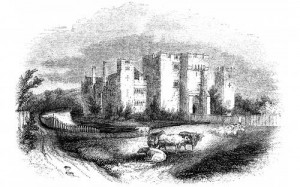 I was also surprised to learn that the original village of Hever stood within the grounds of today’s Castle before Astor relocated the road and village to allow for greater privacy!
I was also surprised to learn that the original village of Hever stood within the grounds of today’s Castle before Astor relocated the road and village to allow for greater privacy!
Learn more about Tudor Hever in this article by Sarah Morris.
Let’s turn our attention to the interior of the castle. The Inner Hall is now the reception room but in Tudor times was the Great Kitchen, complete with a large fireplace and a well. Several Tudor portraits hang on the panelled walls including Henry VII, Henry VIII, Edward VI and Anne Boleyn.
On the mantelpiece is a 20th century replica of the clock that Henry VIII gave Anne Boleyn as a wedding gift, the original of which is now in the collection of Her Majesty Queen Elizabeth II.
The Dining Hall was once the Boleyn Great Hall and is where the family would have entertained guests, including the king and his retinue. It was originally opened to the roof rafters but Thomas Boleyn added a Long Gallery above it in 1506.
On the door of the Dining Hall we find our first Tudor artefact, one of Henry VIII’s locks. Henry, ever paranoid of assassination attempts, took his personal locksmith with him when visiting the homes of his courtiers to fit special door locks to his bedchamber for added security.
The elaborately carved Minstrels’ Gallery was commissioned by William Waldorf Astor, as was the linenfold panelling.
The Library was probably an estate office in Tudor times and today houses an impressive collection of books and locally produced Tunbridge ware.
During our tour, a lovely bird found its way into the library and perched itself on one of the bookcases. Luckily, the groundkeeper was on hand to usher the bird to freedom once more.
The Morning Room was a private retiring room in Anne Boleyn’s day and during the reign of her daughter, Elizabeth I, the Catholic Waldegrave family added a ‘priest hole’ into the corner of the room where the china cupboard is today.
Local legend has it that a priest perished whilst in hiding and that his spirit still lingers…
The stone spiral staircase opens into a small, simple room with an original fifteenth century half-domed ceiling and a simple fireplace carved with Tudor roses. This room is traditionally believed to be Anne Boleyn’s bedroom, although it is unclear as to what the sleeping arrangements were in Anne’s time.
There is a lovely portrait of Anne in the room depicting her in her famous ‘B’ necklace and a French hood. The bedhead inscribed ‘Part of Anne Boleyn’s bed from Hever 1520’ is sadly not authentic and more than likely a Victorian piece made to intrigue visitors.
In the next room, two of Anne Boleyn’s illuminated prayer books (often referred to as Books of Hours) are on display. The earliest one was handwritten on vellum in Bruges, c. 1450, and bears the poignant inscription Le temps viendra (the time will come), Je Anne Boleyn. The other is claimed to be the prayer book Anne took with her to her execution, it is inscribed, ‘Remember me when you do pray that hope doth lead from day to day. Anne Boleyn.’ It’s worth mentioning that I have never seen a contemporary source corroborate this claim.
Find out more about Anne’s book of hours here.
This room also houses a magnificent tapestry that illustrates the marriage of Princess Mary Tudor, Henry VIII’s sister, to Louis XII of France in 1514. It is possible that Anne Boleyn and her sister Mary may be among the ladies depicted in the tapestry, as they are believed to have been present at the wedding. Although Eric Ives, Anne’s biographer, believes it’s possible that Anne did not join Mary Tudor’s entourage until her coronation in November, one month after the wedding.
Whatever the case, we had fun trying to identify Anne! Funnily enough, Sarah and I chose the same woman.
The Queens’ Chamber houses portraits of all of Henry’s wives, although some of the identifications are questionable… A portrait labeled as Catherine Parr c.1528, to me looks very much like Catherine of Aragon.
Even so, Hever is certainly home to an impressive collection of Tudor portraits. David Starkey believes it’s ‘one of the best collections of Tudor portraits after the National Portrait Gallery’ and I tend to agree with him.
Moving right along, Thomas Boleyn built the Staircase Gallery over the Entrance Hall in 1506 to give access between the two wings of the house and the Long Gallery upstairs. Here you will find two portraits of Elizabeth I.
One of the largest bedchambers in the house is King Henry VIII’s Bedchamber named so because of its majestic proportions, although it’s not known for certain which room Henry slept in during his stays. The intricately carved tester bed dates from 1540 and is certainly representative of the luxury Henry would have been accustomed to.
It is important to look up when in this room, as the ceiling dates from c. 1462, making it the oldest in the Castle. The panelling dates from 1565, minus the section over the fireplace added to commemorate former residents, Anne Boleyn and Anne of Cleves.
Perhaps the most impressive space in the entire Castle is the Long Gallery, measuring 30 metres in length and running the entire width of the building. It was built in 1506 by Thomas Boleyn to display art collections, entertain important guests, and exercise during inclement weather. It is said that Henry VIII held court from an elevated alcove at the far end of the Gallery, currently home to a life-sized waxwork Anne Boleyn figure, dressed in a replica of the gown Anne wore for her coronation. This is on display as part of a ‘Royal Romance’ exhibition.
Also in the Gallery, figures of Henry VIII’s six wives and the King himself!
On another note, I had read in Alison Weir’s Lady in the Tower that,
‘there is a posthumous reminder of her [Anne’s] fate: on the stone newel of the spiral staircase leading to the Long Gallery, there is incised the cipher that appears in Henry VIII’s love letters to her, and below it – at some unknown date – someone has carved an axe.’ (Pg. 283)
Sadly, I forgot to take the information with me and couldn’t remember the details so will have to check this on my next visit!
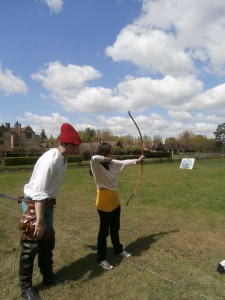 We spent the rest of our time exploring the idyllic gardens, and even partook in some archery.
We spent the rest of our time exploring the idyllic gardens, and even partook in some archery.
The gift shop had some wonderful models of houses on display, including one set in the year 1540. I couldn’t leave without buying myself a replica of Anne Boleyn’s iconic necklace, although I decided to be a little different and buy a ‘G’, rather than a ‘B’.
I said my farewells to Hever once more and unlike my last visit, remembered to visit St. Peter’s Church, which is just across the road.
The Church is well known for being the final resting place of Sir Thomas Boleyn, Anne Boleyn’s father, but he is not the only Boleyn buried here.
Henry Boleyn, son of Sir Thomas and Lady Elizabeth, thought to have died in infancy, is buried near his father; a brass cross marks his tomb.
Read more about the history of St. Peter’s Church here.
After a picnic lunch we made our way to Pashley Manor in Ticehurst, continuing our search for Anne Boleyn.
More pictures from day 3.
[cincopa AQIA_46gtbuw]

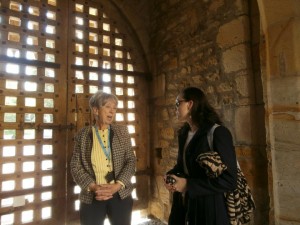
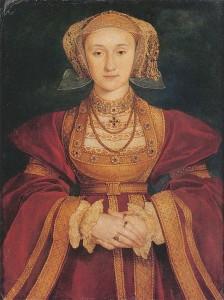
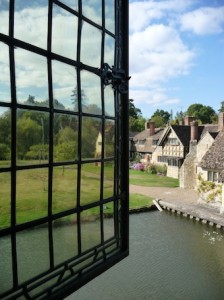
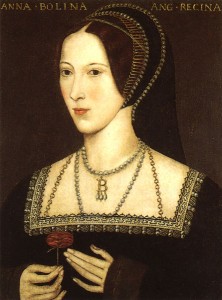
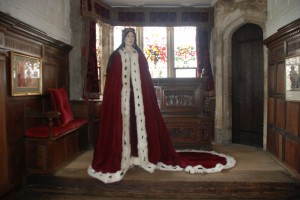
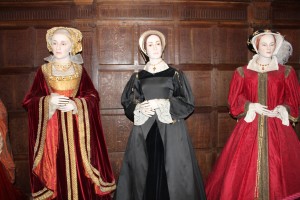
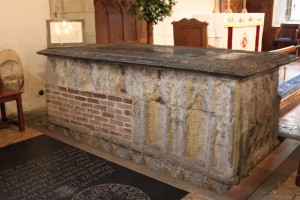







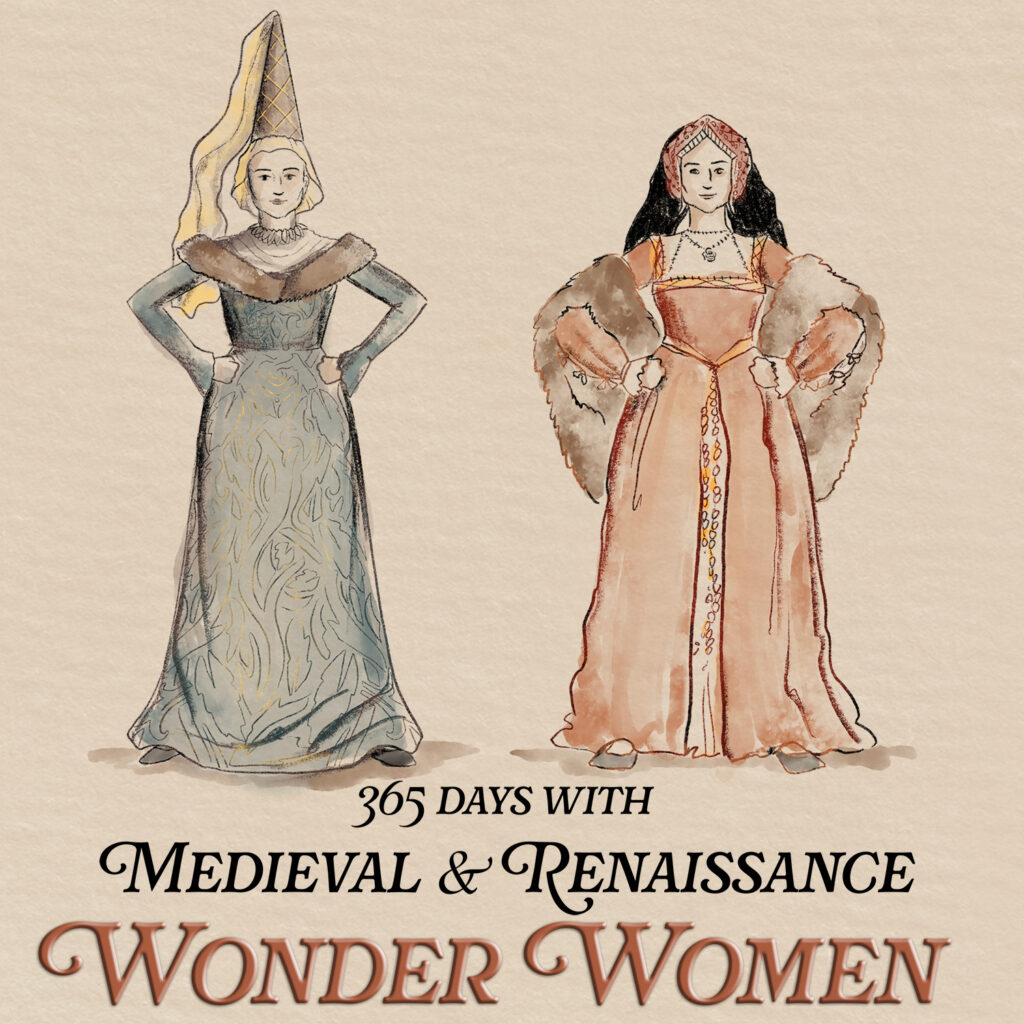
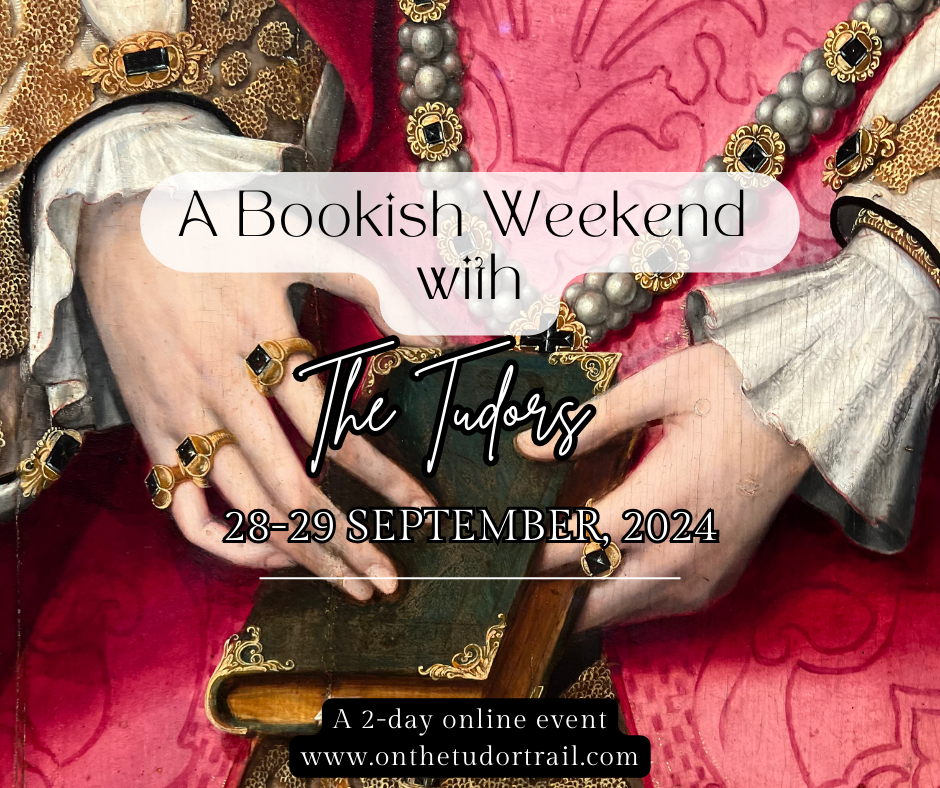
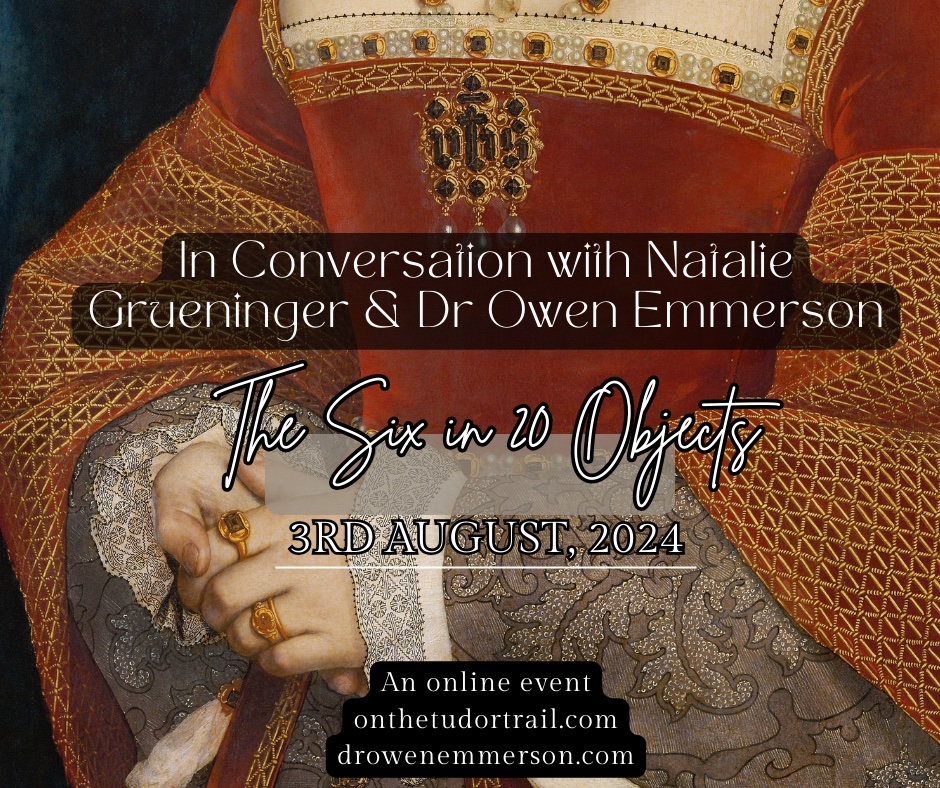
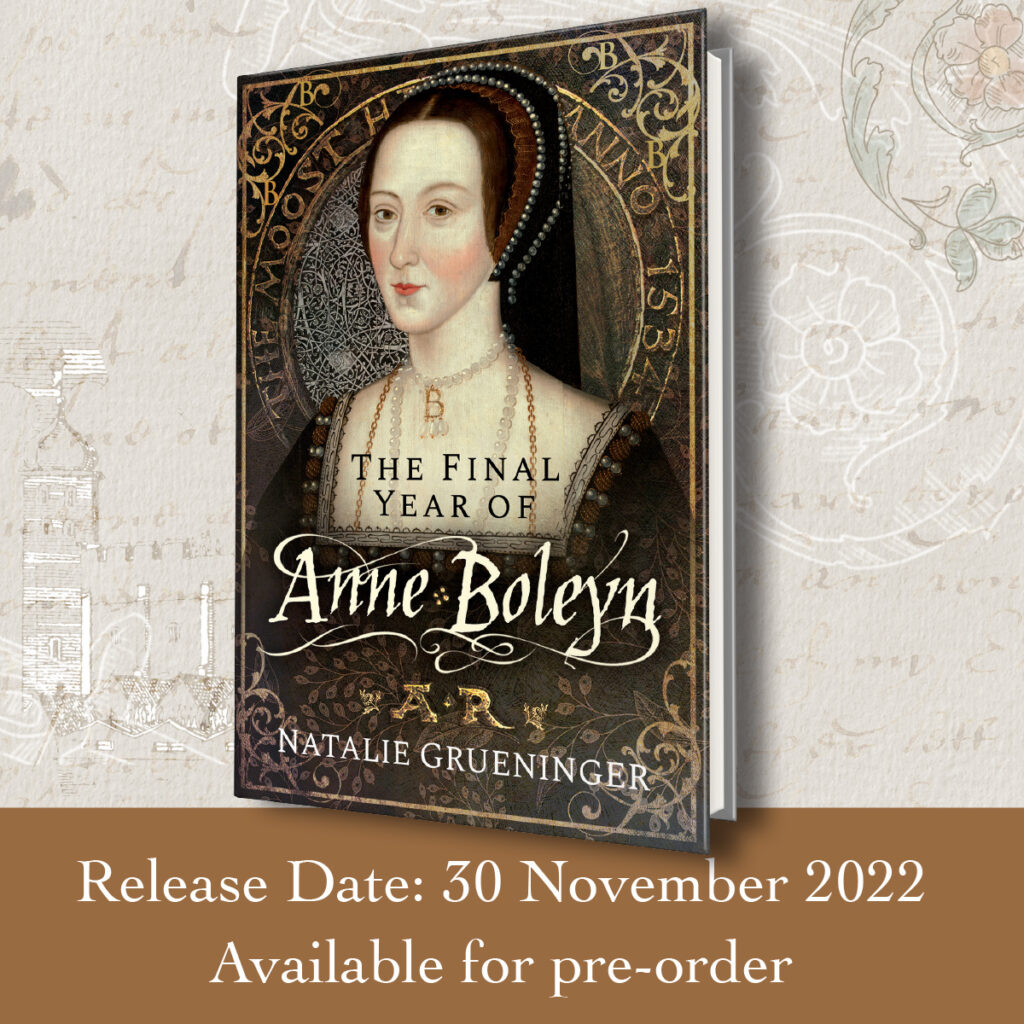
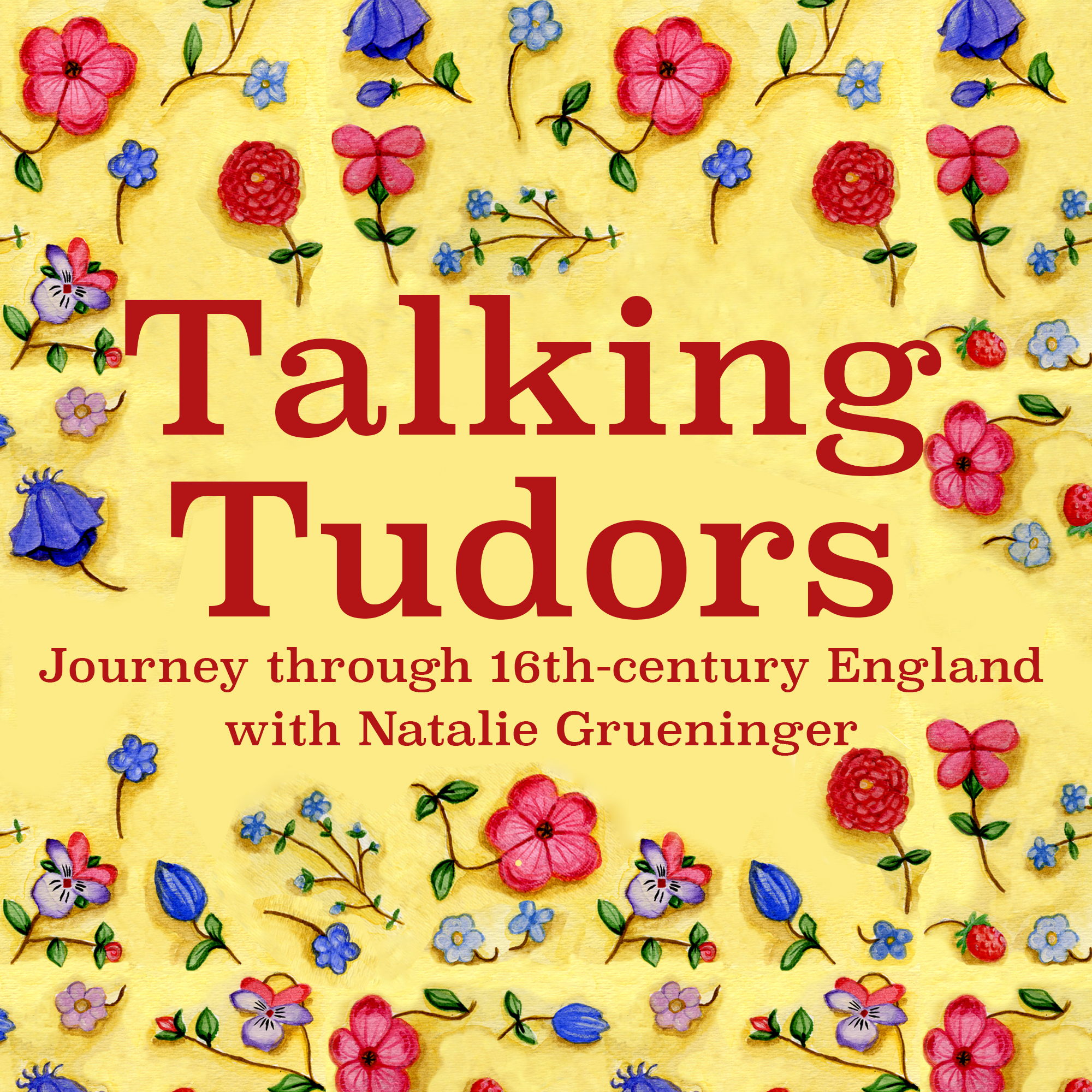

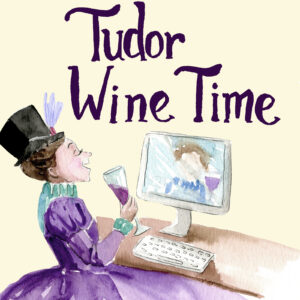


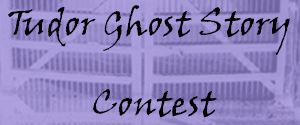

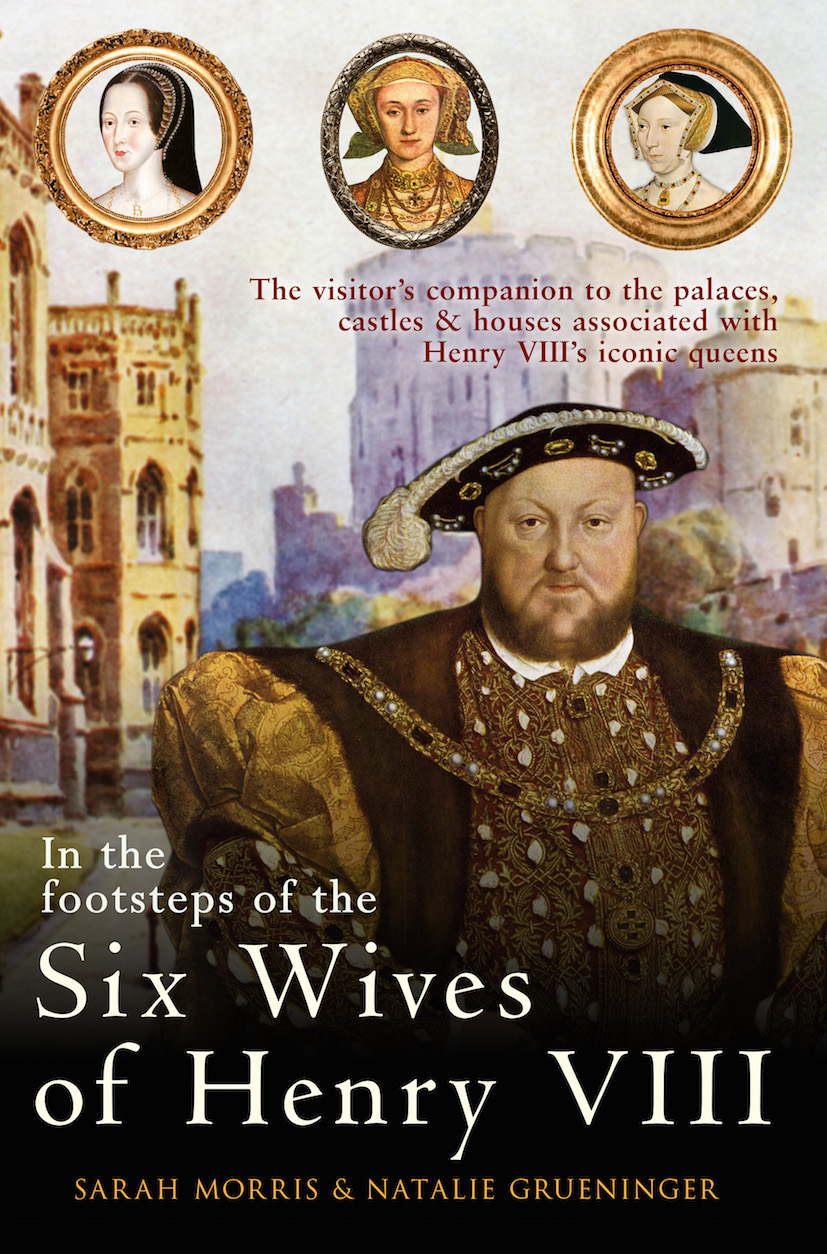
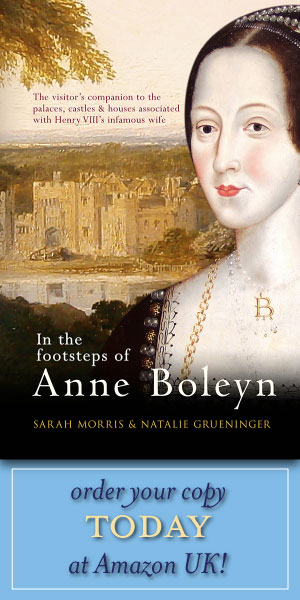


Hever Castle is beautiful – my favourite Anne Boleyn visit! I love the picture that you mentioned hanging in her bedroom, it’s so beautiful… I wish I could find out more about it. The inscription at the very least is not authentic (the modernised spelling “Boleyn” wasn’t used until the 17th century) but I haven’t found any information on the portrait itself. I’m glad you had such a great time… you make me want to revisit myself! Actually… I might just do that 🙂
I visited Hever Castle last summer and reading about your visit brought back such wonderful memories. How fun it must have been to have the castle to yourselves! Since I live in the US, I will have to settle for visits through your blogs/pictures until I can get back there again. Thank you for sharing!
Great post and pictures! I know the castle is usually associated with Anne Boleyn, but do you happen to know how much time – if any – Anne of Cleves spent there after her annulment? I love the cipher and axe tidbit – I had never heard that before. Fascinating.
So enjoying and viewing your research trip! How I hope I can visit some of these locations soon (some again for longer periods of time!) Just over one hour at Hever Castle is just NOT long enough!!
We live near Hever and often visit the site. The so called ‘Ann Boleyn’s Bed’ is doubtful. I have tried to examine it and it appears to be a confection of later oak and likely c17th panels. The decoration is guilloche, which is commonly found on furnishings of that period, such as chests and press cupboards.
How is it known that Anne Boleyn’s bedroom was really hers?
Hi Sarah, I am unsure how they came to this conclusion in the first place. It’s likely that this area was open in Anne’s time, with an area partitioned off for Anne’s parents to sleep in. You can read more about ‘Tudor Hever’ in this guest post by Sarah Morris here. https://onthetudortrail.com/Blog/anne-boleyn/guest-articles/tudor-hever-a-journey-back-in-time-to-the-real-childhood-home-of-anne-boleyn/
Poor Anne, she may have been conniving and power hungry but she didn’t deserve what happened to her. RIP Anne Boleyn
I am from Kent and we often visited Hever Castle through my childhood (early 1970’s). I have a memory of there being a ‘dummy’ in what was supposed to be Anne Boleyn’s bed and I’m sure there was a placard nearby telling you to watch the covers rise and fall as if she were in bed breathing in her sleep.
Does anyone else have any recollection of this because I cannot find anything online about it. I recall it vividly and unless I am confusing this with another location/person it is becoming somewhat of a mystery that it ever was so!